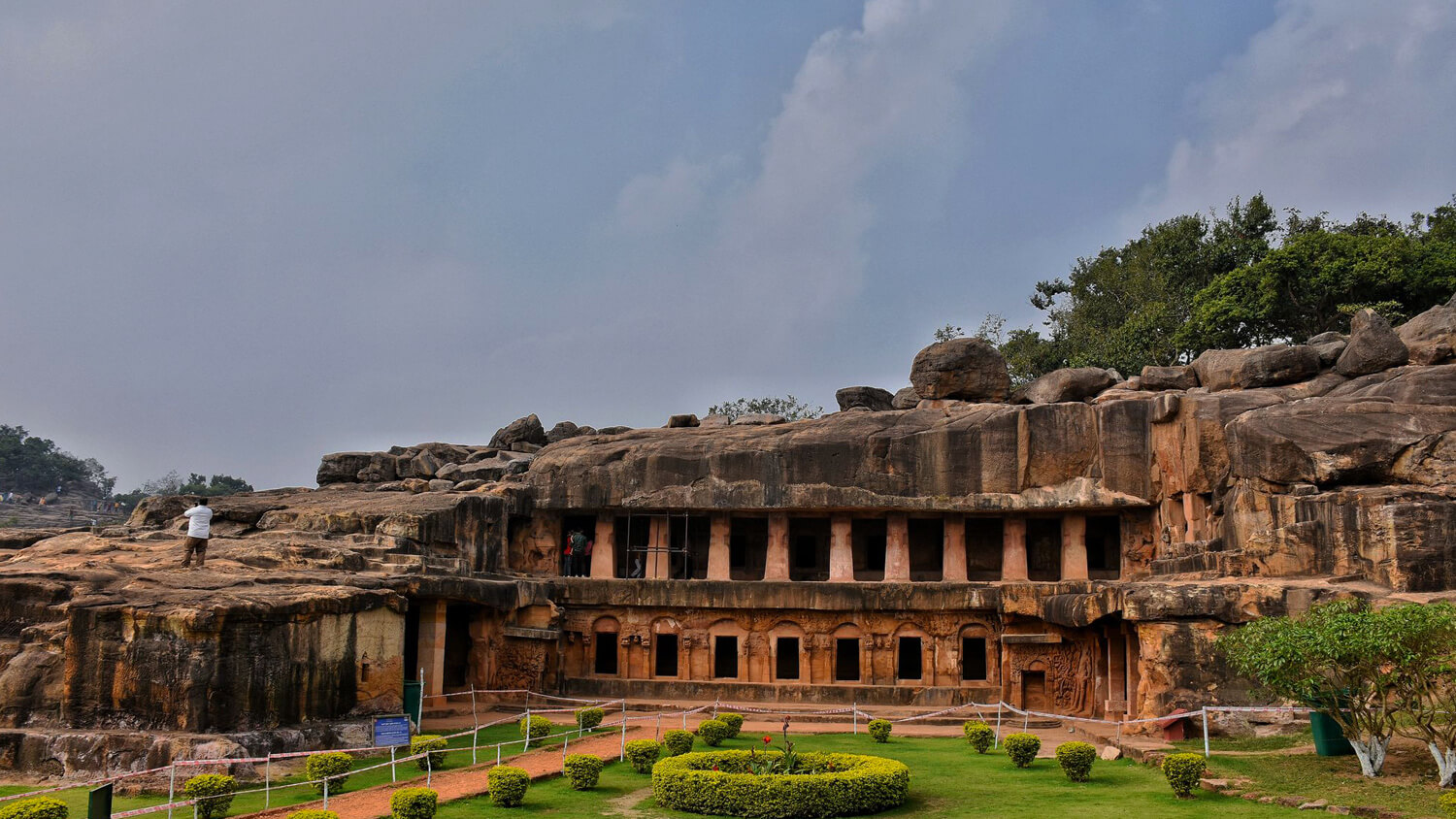
The Udayagiri and Khandagiri Caves are a group of ancient rock-cut caves located in the city of Bhubaneswar in the Indian state of Odisha. These caves are of historical and archaeological significance and date back to the 2nd century BCE. They are a popular tourist and cultural attraction in Odisha and provide insight into the rich history and culture of the region.
The twin hills Udayagiri and Khandagiri (Lat. 20.16 N; Long. 85.47E) are located in the vicinity of Bhubaneswar town. The National Highway No.5 passes through the close proximity of the hills. These two hills represent one of the earliest groups of Jaina rock-cut architecture in eastern India in the field of architecture, art and religion. These caves were first brought to the notice by A. Stirling in 1825 A.D.
These caves were carved during the reign of King Kharavela, who was a prominent ruler of the ancient Kalinga (present-day Odisha) around the 2nd century BCE. The caves are associated with the Jain religion and were used by Jain monks for meditation and religious purposes.
Rising abruptly amidst a wide expanse of arid lateritic soil both the hills separated from each other by a narrow row through which passes modern road between Bhubaneswar and Chandaka. The ancient names of the twin hills of Udayagiri and Khandagiri are Kumari and Kumara parvatas respectively. . There are total 33 rock cut caves on both the hills out of which 18 caves are excavated on Udayagiri hill while 15 are on the Khandagiri hill. Generally caves are single storied but a few of them are double storied also.
These hills are honeycombed with excavated rock-cut caves, essentially meant for the dwelling retreats of the Jaina recluses. On the basis of inscriptional evidences, these caves were first excavated by king Kharavela of Chedi dynasty and his successors who were devout Jainas during the first century B.C. The Jaina occupation was continued here with occasional breaks down to the present day. The Jain temple on the top of the Khandagiri hill was constructed in late 19th century is under worship even at present, preserving the continuity and tradition of the glorious past of the hill.